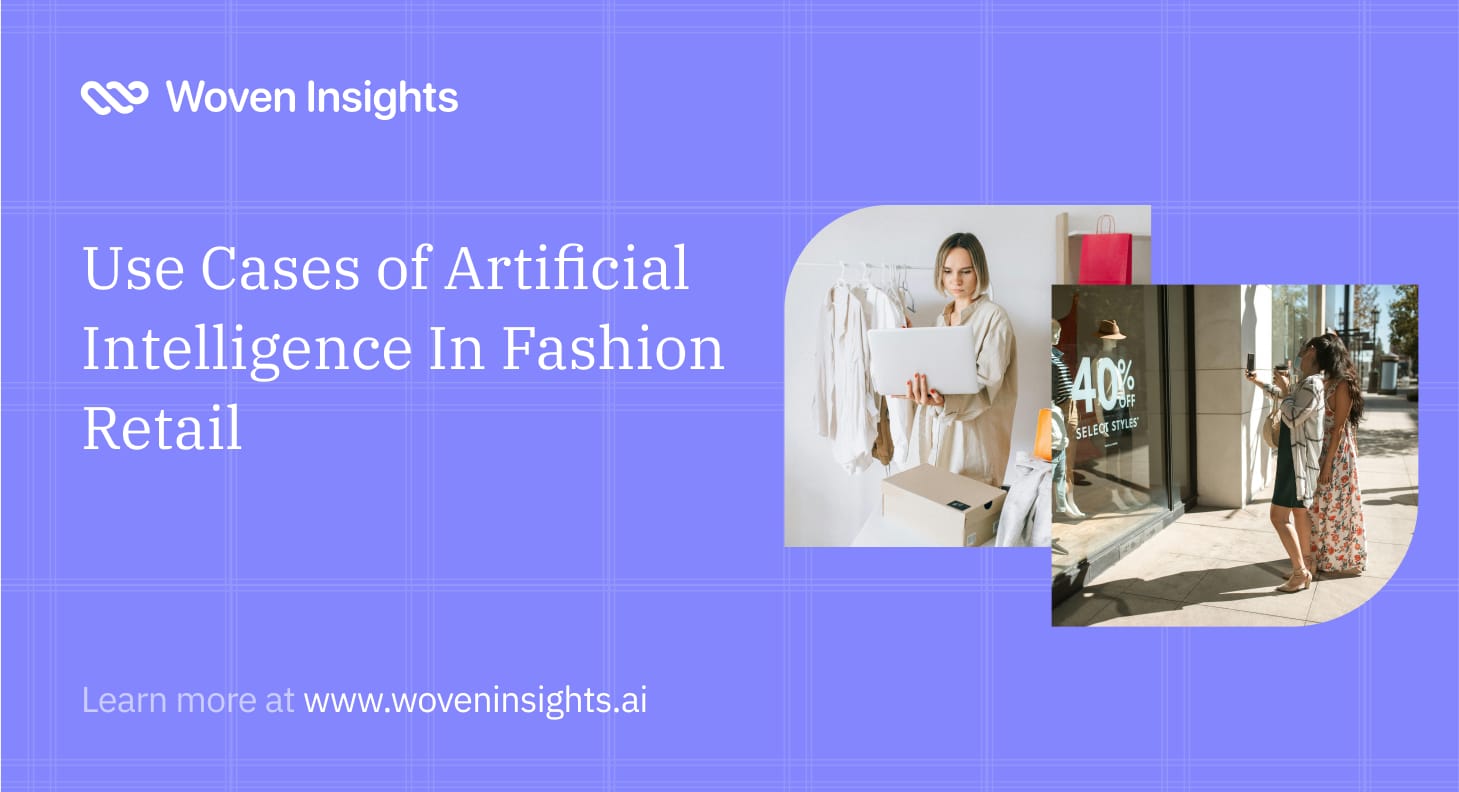Is Artificial Intelligence Really Useful In Fashion Retail?
Skeptics argue that fashion is rooted in elements that AI may struggle to fully grasp. On the other hand, brands leveraging AI-driven insights are seeing unprecedented efficiencies in product development, supply chain management, and customer engagement.

For decades, fashion has thrived on creativity, intuition, and human craftsmanship. But in today’s hyper-digital world, Artificial Intelligence (AI) is quietly reshaping the industry in ways that were once unimaginable.
Skeptics argue that fashion is inherently human - rooted in emotions, cultural shifts, and artistic expression - elements that AI may struggle to fully grasp. On the other hand, brands leveraging AI-driven insights are seeing unprecedented efficiencies in product development, supply chain management, and customer engagement.
One of the most profound transformations is happening in product development. AI-powered tools are enabling designers and brands to analyze massive datasets, predict future trends, and even generate unique designs with machine learning algorithms. Leading fashion businesses are using AI to anticipate customer demand, reducing overproduction and waste. Meanwhile, AI-driven generative design is blurring the lines between human creativity and machine intelligence, raising questions about the future role of designers in the industry.
So, is AI a game-changer in fashion retail, or is it just a passing trend? As we explore AI’s impact across the industry, one thing is certain: the intersection of technology and fashion is only just beginning.
The Role Of AI In Fashion Product Design
Artificial Intelligence is reshaping the creative landscape of fashion design by offering unprecedented opportunities for innovation. It serves as a collaborative partner for designers, allowing them to explore new ideas and concepts that may not have been possible through traditional methods.
Woven Insights helps designers, merchandisers and retailers to identify the most in-demand brands, colours, and clothing categories per time, to help them tailor their design and retail strategies for business success.
Key aspects of AI's role include:
- Trend Prediction: Fashion AI algorithms like Woven Insights analyze vast historical datasets to identify emerging patterns and forecast popular styles. This predictive capability allows designers to align their creations with consumer preferences and market demands, ensuring relevance and appeal.
- Creative Inspiration: AI generates diverse visual stimuli that inspire designers during the ideation phase. Tools like EDITED and Market Insights provide retail insights into micro and macro trends, while generative AI platforms allow designers to create variations of designs quickly. This not only accelerates the creative process but also pushes the boundaries of traditional design thinking.
- Collaboration with Designers: Designers are increasingly viewing AI as a collaborator rather than a replacement. For instance, artists like Field Skjellerup utilize AI to generate unique garments, emphasizing the collaborative nature of working with these technologies. This approach fosters an environment where human creativity is augmented by machine intelligence.
Examples of AI Tools Aiding Designers in Creating New Styles
Several innovative AI tools are currently being used in fashion design, each contributing uniquely to the creative process:
- The New Black: An AI-powered platform that allows designers to bring unique concepts to life rapidly. It supports various design categories and facilitates quick iterations while ensuring originality in designs.
- ZMO.ai: This platform generates high-quality images of clothing on diverse models without the need for traditional photoshoots. It significantly reduces costs while promoting inclusivity in fashion marketing.
- Mercer (Formerly CALA): A unified platform that integrates design, development, production, and logistics using AI-generated ideas. It enhances collaboration among teams and streamlines operations throughout the design process9.
These tools exemplify how AI is not only enhancing creativity but also optimizing the efficiency of fashion product design. As AI technology continues to evolve, its integration into fashion is expected to deepen, leading to more innovative designs and sustainable practices across the industry.
The Role Of AI In Fashion Trend Analysis
AI-driven trend analysis is revolutionizing the fashion industry by providing brands and designers with advanced tools to predict upcoming trends, analyze consumer preferences, and optimize their offerings. Tools like Woven Insights, EDITED, and Stylumia exemplify how AI is utilized for effective trend forecasting.
Utilizing AI to Predict Upcoming Fashion Trends
AI plays a crucial role in forecasting fashion trends by leveraging large datasets and sophisticated algorithms. These technologies analyze various data sources to identify emerging styles and consumer preferences:
- Woven Insights uses AI to analyze vast amounts of unstructured fashion data from customer reviews and product information across e-commerce platforms. By employing real-time consumer sentiment analysis and retail pattern recognition, it provides actionable insights into market trends and consumer preferences, helping designers understand what fashion categories, styles, colors, and materials are gaining traction in the market.
- EDITED focuses on real-time data analysis from multiple sources, including online retail sites and social media. Its AI algorithms track product performance and consumer behavior to predict future trends accurately. This allows brands to respond quickly to shifts in consumer demand and adjust their collections accordingly.
- Stylumia employs proprietary machine learning algorithms to analyze consumer demand signals and preferences. By examining millions of data points, it helps brands identify winning products and forecast demand across various categories, ensuring that they remain relevant in a competitive market.
Data Sources and Methods AI Uses for Trend Forecasting
AI utilizes diverse data sources and methodologies for effective trend forecasting:
- Social Media Analytics: Platforms like EDITED and Heuritech analyze images and interactions on social media to detect emerging styles and color trends. This real-time analysis helps brands stay ahead of the curve by identifying what consumers are currently engaging with.
- Consumer Reviews: Woven Insights' Consumer Insights module, for example, focuses on customer reviews as a primary data source. By analyzing sentiments expressed in these reviews, the platform identifies specific preferences related to fit, color, and style that can inform design decisions, and provides insights valuable for fashion competitive analysis.
- Machine Learning Techniques: AI retail fashion tools utilize machine learning techniques to process large volumes of data. This includes predictive analytics that learns from historical trends to forecast future demands accurately.
Benefits of AI-Driven Trend Analysis for Designers and Brands
The integration of AI in trend analysis offers several significant benefits:
- Enhanced Accuracy: AI provides more precise forecasts compared to traditional methods by analyzing extensive historical data. This reduces the risk of overproduction and ensures that collections align with actual consumer demand.
- Increased Efficiency: Automating the data collection and analysis process allows brands to respond quickly to market changes. This agility is essential in the fast-paced fashion industry where trends can shift rapidly.
- Sustainability: By optimizing inventory management based on accurate demand forecasts, brands can reduce waste associated with overproduction. This contributes to more sustainable practices within the fashion industry.
- Improved Design Decisions: Designers benefit from actionable insights that inform their creative processes. Understanding consumer preferences enables them to create collections that resonate with their target audience, ultimately driving sales.
AI-driven trend analysis is transforming how fashion brands predict trends, manage inventory, and design products. By utilizing Fashion AI Insights solutions, fashion retailers and apparel manufacturers can harness the true power of data to make informed decisions that enhance creativity while promoting sustainability and growth in their operations.
About Woven Insights
Imagine if you had access to real-time in-depth fashion retail market and consumer insights, from more than 70 million real shoppers and 20+ million analyzed fashion items from global fashion brands.
That's basically what Woven Insights offers fashion brands, manufacturers and research teams of all sizes - with the best pricing in the industry.
Introducing Woven Insights
Woven Insights provides you with all the actionable data you need to create fashion products that are truly market-ready and consumer-aligned.
Click on the Book a demo button below to get started today.
